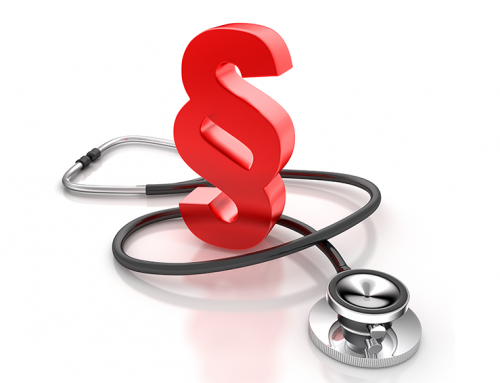Why the value of on-site monitoring cannot be challenged by remote/ centralized monitoring

This is not to say we should do as we always did. This is also not to promote unnecessarily frequent monitoring visits or a 100% source data verification (SDV). Certainly this is not to advise against embracing digitalization with its technological possibilities that facilitate and smarten processes necessary for an effective study monitoring.
However, in times where risk-based quality management including centralized monitoring are not only in the regulatory focus but also substantially covered in the literature, I feel we forget to reflect the undeniable value that on-site monitoring can give to a clinical study.
In the end, monitoring strives to fulfill three purposes:
On-site monitoring helps to achieve these goals by certain unique features which validate its raison d’être also in the future of clinical research.
1. Building a relationship with the study team at the site
As trivial as it might seem at a first glance: the establishment of a personal contact, of an actual relationship, between two interacting stakeholders (the monitor and the study team at the site) is an absolute benefit for all parties. The monitor thereby functions as a mediator between the pharmaceutical company (or medical device company) and the study team at the site.
However, in contrast to a field staff, the monitor’s role is clearly outside marketing: he is the first point of contact for the site, he mediates questions and answers between the site and the sponsor, he knows best where the shoe pinches and is a true support to the site in any aspect of the clinical trial conduction. As such, the site appreciates the monitor as a “supporter” rather than a disturbance.
In a successful relationship between the study team and the monitor, problems can be read between the lines. Issues can be detected and resolved at a very early stage – at best, in a close collaboration between the monitor and the site.
2. Checking the basis of data and knowledge
When it comes to monitoring itself, technology has given us a whole plethora of opportunities to check remotely upon the quality, accuracy and compliance of a clinical study. However, there are also certain demands upon monitoring which require the presence of the monitor at the site. Here are some examples where a solely centralized/ remote monitoring cannot stand up to the standards:
Source data verification (SDV):
As long as the original data in the patient file are not accessible remotely, e.g. due to data protection reasons, the reconciliation between the patient file data and the (e)CRF data can only be performed at the site (no matter to which extent SDV is performed).
Correct handling of the investigational medicinal product (IMP):
In most cases, the IMP is a non-authorized product – as such, its proper handling (distribution, storage, drug account, shipping, destruction) should be under strict surveillance at the site.
Patient information / informed consent:
This goes beyond the patient’s signature on the consent form. The entire informed consent process should be revised in the patient file at the site in order to assure patient safety and accordance with regulations.
Patient enrolment:
For patients’ safety it is absolutely crucial that only subjects are included in the trial who meet the inclusion/exclusion criteria. On site, the monitor is able to check all (paper and electronic) medical records to proof compliance with eligibility criteria.
Adverse event (AE) reporting:
Again, patient safety is potentially challenged if there is no check for unreported AEs. On the basis of the medical record at the site, the monitor is able to ascertain that no AE has been missed for reporting.
Investigator site file (ISF):
Apart from valid clinical data in the (e)CRF, also the essential documents in the ISF should be checked for its solidity and completeness by the monitor to ensure a continuous traceability throughout the course of the trial.
Familiarity with the study:
In order to guarantee for compliance with the protocol, data integrity and patient safety, the study team at the site must have a great knowledge and understanding of the trial. By the direct contact of the monitor with the study team at the site, he can get a good feeling of how well the site staff has internalized the protocol and has implemented procedures and processes for a proper study conduct.
3. Reacting through involvement
With the monitor being present at the site, he has the possibility to develop solutions in immediate reaction to observed problems or issues. Most importantly, he can actively involve the study team in this process. Consequently, the site staff might feel much more motivated to document flawlessly and to contribute valid data for a successful trial output. That is, rather than feeling under “remote control” and overpowered by sudden actions, the site staff is effectively in charge to optimize the processes in a close collaboration with the monitor for a smooth study course.
For example: Receiving assistance by the monitor at the resolving of queries, might result in an immediate training effect for the study team in order to prevent even more query load in the future. Moreover, the study team and the monitor can discuss issues or uncertainties that might have led to incorrect documentation and optimize the processes together. When a new staff joins the study team or when observing a non-compliance with the protocol, the monitor can initiate an immediate (re-)training or coaching at the site. Also the development of recruitment strategies can be a joint venture between the monitor (as mediator between the site and the pharmaceutical company) and the study team.
The site staffs’ input is not only valuable by itself but being involved also leads to highly motivated teams at the site and, thus, high-quality data and compliance in the end. And from these interactions between site personnel and monitor, the sites’ feedback can be provided to the sponsor in a structured way (i.e. in the monitoring report), and thus may lead to a learning also at the sponsor level (e.g. what is an useful immediate reaction to a certain issue, learning for future studies).
So what is then the best monitoring approach?
As always – no single monitoring approach works best for every clinical study.
Based on the characteristics (including risks) of the study, the monitoring strategy must be adapted and documented in the monitoring plan accordingly.
However, a (risk-based) mix of centralized/remote and on-site monitoring is a reasonable approach in most of the cases since both types have their undeniable strengths and weaknesses.
Picture: Beatriz Pérez Moya









